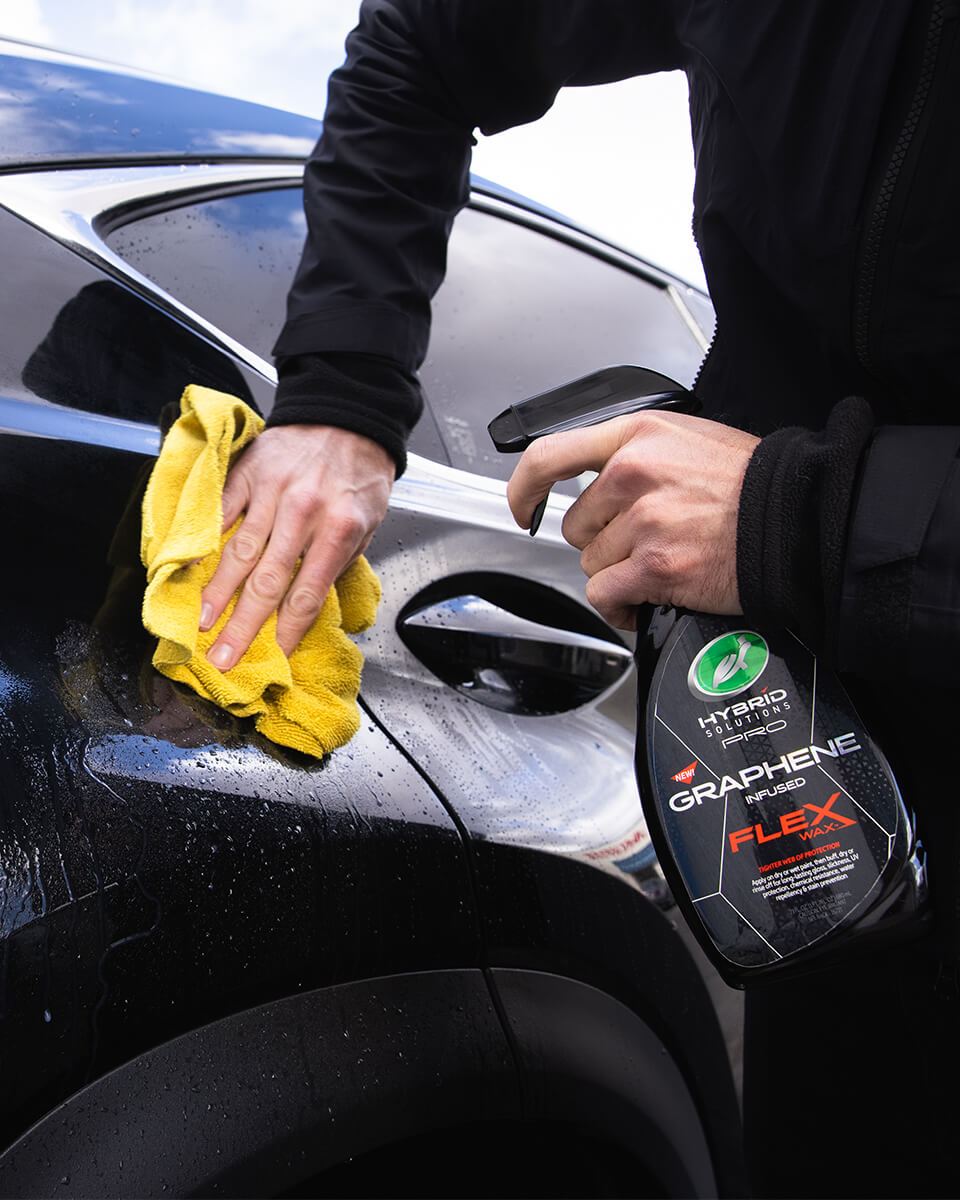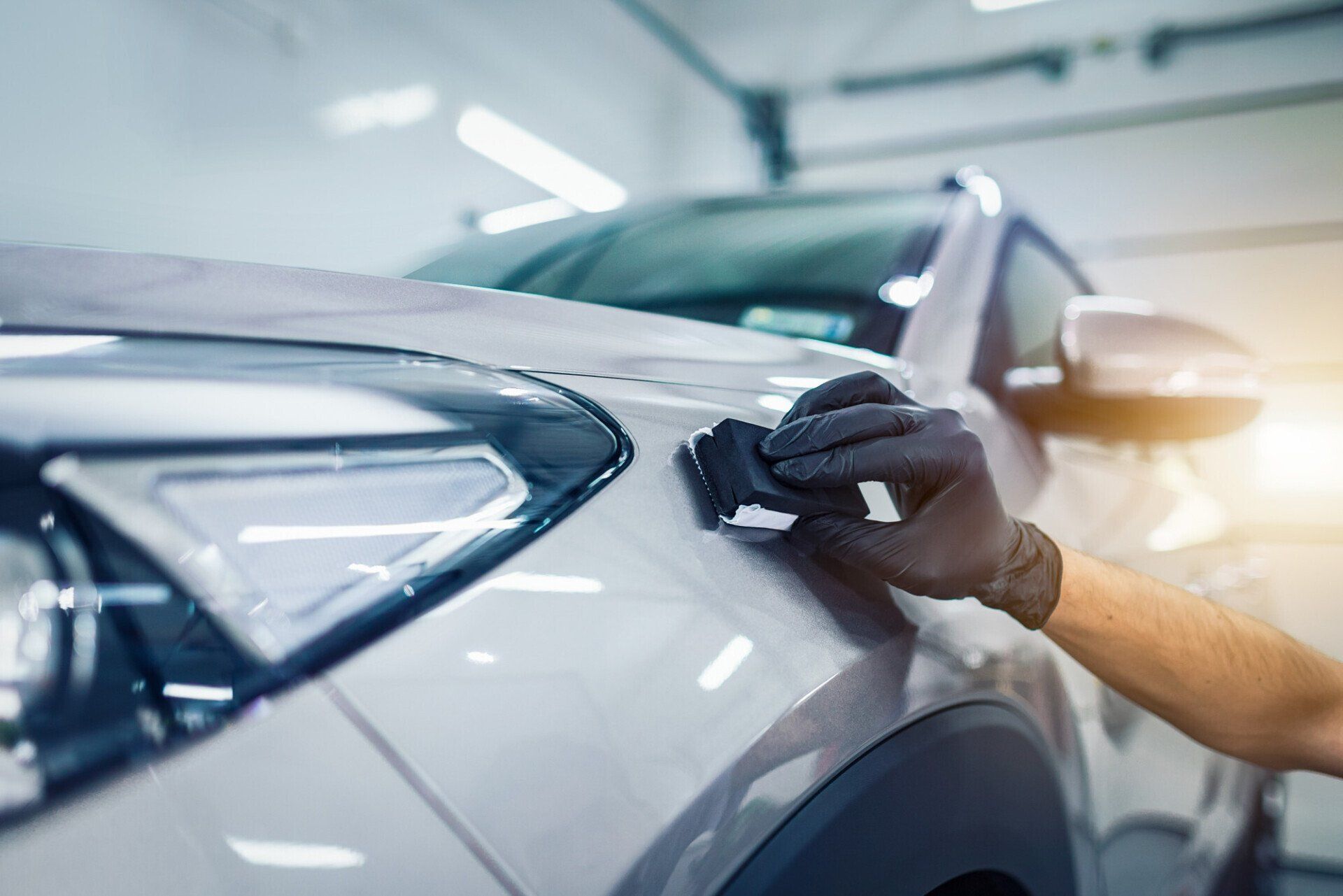A simple guide to booking Ceramic Coating Newark professionally
Exploring the Science Behind Car Ceramic Coating and Its Safety Features
The science of car ceramic coating presents a remarkable research in advanced automotive protection. Composed mostly of silicon dioxide and polymers, these layers create a durable bond with vehicle paint. This interaction enhances sturdiness versus environmental dangers while using hydrophobic advantages. Nonetheless, the intricacies of how these finishes job and their lasting benefits stay less understood. Unboxing these information reveals why ceramic layers are becoming a favored choice for automobile treatment
What Is Ceramic Coating?
Ceramic coating is a liquid polymer that chemically bonds to the surface of a lorry's paint. This innovative protective layer enhances resilience and offers remarkable resistance to ecological factors. Unlike standard wax or sealers, which supply temporary security, ceramic coatings produce a lasting shield that can hold up against extreme conditions such as UV rays, acidic impurities, and extreme weather. When applied appropriately, the coating creates a hydrophobic surface area, causing water to bead and slide off, which aids in preserving the vehicle's cleanliness. Additionally, it provides improved gloss and depth to the paint, making the vehicle show up more sleek and dynamic. The application procedure normally entails detailed surface area preparation, including cleaning and sprucing up, to assure peak bonding. Consequently, ceramic finishes are ending up being significantly prominent amongst car lovers and those seeking to protect their investments, assuring to maintain the car's visual charm while reducing the frequency of upkeep.
The Make-up of Ceramic Coatings
The intricate formula of ceramic finishings largely is composed of silicon dioxide (SiO2), which is obtained from natural sources like quartz and sand. This crucial element offers the foundation for the coating's durability and protective high qualities. Along with SiO2, ceramic finishings often consist of numerous polymers and ingredients that enhance adhesion, versatility, and resistance to environmental elements. These compounds work synergistically to produce a durable obstacle versus pollutants such as dust, chemicals, and UV rays.Furthermore, some solutions include titanium dioxide (TiO2) or various other nanomaterials, which can augment the coating's hydrophobic buildings, leading to improved water repellency. The precise composition can vary considerably amongst producers, influencing performance and durability. Inevitably, the mix of these elements culminates in a safety layer that not just boosts the aesthetic allure of vehicles yet additionally offers to lengthen their life expectancy by shielding the surface from possible damage.
Exactly How Ceramic Coatings Work
Comprehending how ceramic finishes function includes exploring their chemical make-up, which adds to their safety top qualities. The application procedure is necessary for accomplishing ideal results, while long life and toughness variables establish the coating's efficiency in time. With each other, these aspects highlight the benefits and performance of ceramic coverings for vehicle defense.
Chemical Structure Explained
While many car proprietors look for resilient protection for their cars, the chemical make-up of ceramic finishes plays a vital role in their performance. These finishings primarily contain silicon dioxide (SiO2), which is stemmed from all-natural minerals. This compound creates a strong bond with the automobile's paint, creating a sturdy, protective layer. In addition, lots of ceramic coverings have titanium dioxide (TiO2), enhancing their hydrophobic homes and resistance to UV rays. The visibility of polysiloxanes can further enhance versatility and durability. With each other, these aspects add to the coating's ability to push back water, dust, and contaminants, while also supplying a high-gloss coating. Recognizing this chemical foundation helps car proprietors value the robust security supplied by ceramic coatings.
Application Process Summary
Using ceramic finishes includes a precise process that guarantees excellent bonding and defense for the automobile's surface area. Complete cleaning and decontamination of the car's outside are carried out to remove dust, gunk, and previous waxes. This step verifies that the surface is complimentary from pollutants that can prevent attachment. Following this, the paint is often polished to enhance clarity and remove any imperfections. As soon as prepared, the ceramic coating is applied in small areas using an applicator pad, permitting uniform insurance coverage. The coating is then left to cure, developing a strong chemical bond with the surface. Correct healing times and conditions are vital, as they validate the coating accomplishes its maximum performance and protective top qualities.
Long Life and Toughness Variables
Ceramic layers are made to supply resilient protection through their innovative chemical structure, which produces a robust obstacle against ecological impurities. The toughness of these finishings is influenced by variables such as the thickness of the application, the quality of the item, and the problems under which the lorry check my site is subjected. High-quality ceramic layers can last numerous years, withstanding scratches, UV rays, and chemical discolorations. Proper upkeep, including normal washing and periodic reapplication, can even more boost durability. Additionally, ecological elements like climate and direct exposure to contaminants can influence the life expectancy of the coating. On the whole, when applied and kept properly, ceramic coverings supply phenomenal toughness, making them a popular option for car fanatics looking for to protect their lorry's appearance.
Hydrophobic Properties and Water Repellency
Hydrophobic residential or commercial properties are a trademark of top quality car ceramic coverings, substantially enhancing the automobile's surface area efficiency. These finishings produce a molecular bond with the car's paint, leading to a surface that pushes back water effectively. When water enters contact with a ceramic-coated surface, it beads up and rolls off, minimizing the amount of liquid that stays on the paint. This habits not only adds to an aesthetically pleasing appearance yet additionally lowers the accumulation of pollutants such as dirt, gunk, and roadway salts.The boosted water repellency brings about much easier cleansing and maintenance, as less initiative is needed to get rid of undesirable materials. Furthermore, the hydrophobic nature of ceramic finishings aids in preventing water spots, which can mar the finish of uncoated surface areas. In general, the consolidation of hydrophobic residential or commercial properties in ceramic finishings plays a crucial duty in keeping the lorry's pristine look while streamlining upkeep.
Protection Against Scratches and UV Damages
Car ceramic finishes use considerable security against scrapes and UV damage. The scratch resistance mechanism creates a durable layer that soaks up effects, while the UV protecting benefits aid keep the lorry's paint integrity gradually. With each other, these functions add to a longer-lasting and visually attractive finish.
Damage Resistance System
Utilizing advanced modern technology, ceramic layers give a durable shield versus scratches and UV damages, improving the long life and appearance of lorry surfaces. The scrape resistance system of these coatings is connected to their special molecular framework, which develops a durable bond with the automobile's paint. This bond creates a hard, protective layer that can take in impacts and resist abrasions. In addition, the smooth surface of the coating minimizes friction, making it tough for impurities to stick and cause scrapes. The chemical composition of ceramic layers usually includes nanoparticles that reinforce the protective layer, further boosting its resilience. Automobiles treated with ceramic finishes exhibit noticeably enhanced scrape resistance compared to conventional wax or sealants, guaranteeing a beautiful finish over time.
UV Shielding Benefits
The safety qualities of ceramic coatings prolong beyond scrape resistance to consist of substantial UV protecting benefits. These coverings create a robust obstacle that mirrors unsafe ultraviolet rays, guarding the automobile's paint and underlying materials. Prolonged direct exposure to UV radiation can bring about fading, oxidation, and deterioration of the paint finish. By incorporating ceramic layers, lorry proprietors can efficiently mitigate these risks, protecting the aesthetic allure and stability of their automobiles. Additionally, the UV blocking homes add to boosted durability, reducing the frequency of repainting and maintenance. Inevitably, the integration of ceramic layers uses an extensive solution for shielding cars from the destructive impacts of sun exposure, making sure a continual, vivid appearance with time.
The Long life and Upkeep of Ceramic Coatings

Regularly Asked Inquiries
Can Porcelain Coating Be Applied to Any Kind Of Automobile?
Ceramic coating can be related to different types of automobiles, consisting of autos, vehicles, and motorbikes. However, surface area prep work and compatibility with details products are necessary for excellent attachment and efficiency of the coating.
Just How Much Does Ceramic Coating Normally Cost?
Ceramic coating normally costs between $500 and $2,000, relying on elements such as automobile size, coating quality, and expert application. The investment can provide durable defense and improve the car's appearance with time.

Is Professional Application Required for Best Outcomes?
The need of expert application commonly depends upon preferred results. Specialists commonly ensure appropriate surface area preparation and application methods, resulting in ideal bonding and durability of the coating, which may be testing for inexperienced individuals to attain.
Can Ceramic Coatings Be Gotten Rid Of or Repaired?
Ceramic layers can be eliminated or fixed, though the process might need specific solvents or methods - Ceramic Coating Newark. Appropriate elimination is essential to stay clear of damage to the underlying surface, emphasizing the relevance of expert help for perfect outcomes
How Does Porcelain Coating Compare to Traditional Wax?
The comparison in between ceramic coating and conventional wax discloses that ceramic finishes provide superior durability, improved protection against ecological contaminants, and longer-lasting luster, while wax requires a lot more regular application and provides less general resistance to damages.